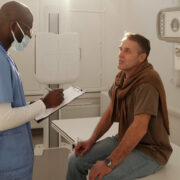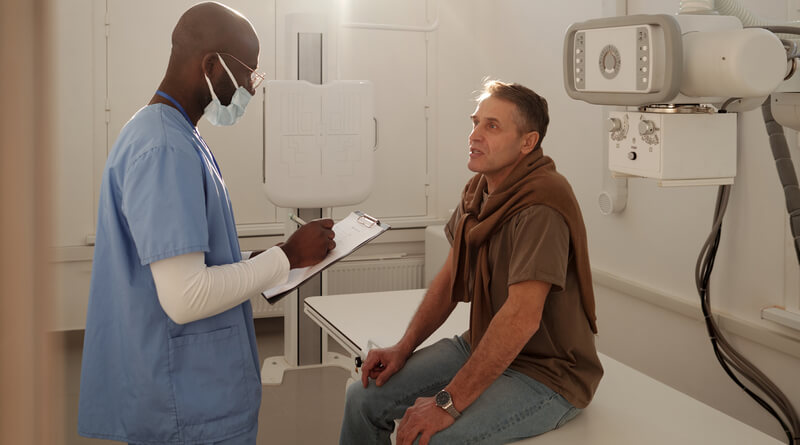5 Often-Overlooked Ways to Improve Patient Safety in Hospitals and Medical Centers

If patients aren’t safe, then the purpose of a healthcare facility is rendered redundant. As such, taking safety seriously on-site has to be a priority.
Here is a glut of great ways to go about this, covering examples that tend to fall between the cracks during planning.

Make sure air quality is as good as possible – e.g. consider using an industrial filter during building work
In a post-pandemic world, awareness of the importance of air quality in public spaces has increased significantly. Even so, it’s necessary to think carefully about how this is handled not only when a hospital or medical center is up and running, but also when construction is taking place.
Clearly, you need to filter the air to protect patients from infectious diseases and other airborne pathogens, but there’s also the prospect of lingering dust and debris left from building work to take onboard.
That’s where using an industrial filter like these comes into play. Processing large volumes of air in a given space to remove unwanted nastiness will set your facility up to serve patients more safely from day one.
Provide patients with the right information
They say that knowledge is power, but in a healthcare context, it’s also key to ensuring patient safety. Keeping patients in the loop about the nature of their condition and also the types of treatments that they’re undergoing will avoid serious errors being made.
Healthcare professionals need to be trained in conscientious care, with effective communication at the core of this.
It’s about being clear and honest, as well as ensuring that patients actually understand what they’ve been told, not that they’re merely nodding along without taking anything onboard.
Managing language barriers is also part and parcel of this, ensuring you can guide them to the right services and treatments.
Wash and sanitize hands following guidelines
Healthcare workers and patients alike need to adhere to the right procedures for washing hands, so that the transmission of infections across the site is minimized.
Even with a reduction in touch points through things like touchless biometric patient identification platforms, poor hygiene is still a huge threat in hospitals and medical centers.
The widespread use of hand sanitizing stations, as well as conspicuous signage throughout, can help. Employee training is also needed to reinforce the tenets of good hand hygiene.
Embrace digital transformation to eliminate physical paperwork
Migrating from traditional paper documents to a digital equivalent is useful in lots of sectors, and stands to offer the biggest benefits in healthcare. This comes down to the simple fact that if paperwork is incorrectly filled out or goes missing, it can jeopardize the health of patients.
Conversely, by adopting digital solutions instead, patient data can be stored, transferred, and accessed seamlessly. Updates can be applied in real-time, and handovers between practitioners can take place without the margin for error that would previously have left lives in peril.
Another aspect of the digital transformation of hospitals and medical centers we need to touch on is the role of project management software in this context. Being able to assign tasks to team members, track progress and provide updates digitally prevents administrative mistakes from having ramifications in the way treatment is provided to patients.
Thus it’s about cutting ties with the old ways of doing things and turning to the benefits of new technology, not just because it’s more convenient, but because it can deliver better outcomes for more patients.
Hospitals are also digitizing patient identification – with RightPatient, patient identification is done using patients’ faces and photos. Patients are enrolled using their photos – the touchless patient identification platform attaches this photo to the EHR. During subsequent visits, patients just need to look at the camera – RightPatient compares the live photo with the ones in the EHR system, and upon a successful match, the appropriate EHR is provided.
Monitor as much as possible
Technology has extended its tendrils into other aspects of operating healthcare facilities and being able to monitor premises and the people within it puts decision-makers and employees in greater control of the environment.
Biometrically monitoring a patient’s current status is one thing, but being able to empower care gives with tech to double-check that the right medication is being given to the right person goes a step further.
There’s also the straightforward significance of on-site security, as achieved and maintained through monitoring points of entry, managing access to certain areas, and tracking visitors as well as employees and patients. The latest security solutions allow for much of this to be automated, meaning that you don’t need a huge team dedicated just to this aspect of running a facility.
The bottom line
You will encounter your own safety issues beyond those mentioned here, so, being adaptable as an organization is just as important as knowing what common concerns need to be on your radar.
A good way of looking for imperfections that are impacting the patient experience is to ask them. Feedback from those you serve will point you towards flaws that would otherwise have gone unnoticed, especially in a busy healthcare organization where resources may already be stretched to breaking point.





















 As you can see, the 21st century has made it easier than ever for our seniors to spend time with their families instead of homes. With a few handy gadgets everyone can feel happy and satisfied knowing that their oldest relatives are close by and adapted to every need. Elder care is though, and given that most seniors want to live on their own for as long as possible, it is recommended for their kids to find a way and look after them anyhow.
As you can see, the 21st century has made it easier than ever for our seniors to spend time with their families instead of homes. With a few handy gadgets everyone can feel happy and satisfied knowing that their oldest relatives are close by and adapted to every need. Elder care is though, and given that most seniors want to live on their own for as long as possible, it is recommended for their kids to find a way and look after them anyhow. 